Helpful Hints: Check tire pressure periodically (tab. 4.2). High or low pressure leads to premature tire wear, poor handling and vehicle stability.

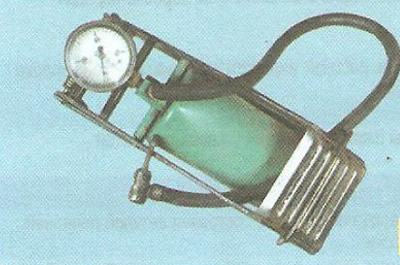
We recommend using a foot pump with a built-in pressure gauge.
In order for the tires to wear out evenly, rearrange the wheels every 15,000 km in accordance with the diagram in Fig. 4.1.
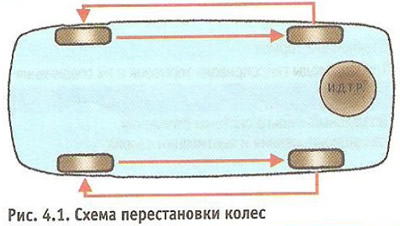
In addition, every 30,000 km, balance the wheels and check the alignment of the front wheels. To do this, contact a specialized workshop.
Note: There is a sticker on the B-pillar in the driver's door opening that indicates the recommended air pressure in the tires for various vehicle loads.
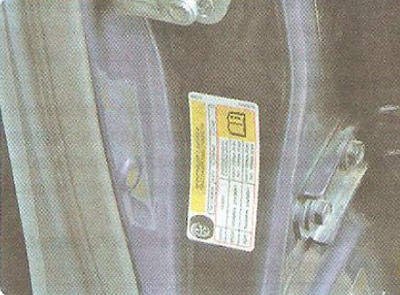
Warnings: All work on the repair of wheels is carried out in specialized workshops. Check that the wheel is balanced after repair.
Using tires with worn tread can lead to an accident.
1. Carefully inspect the tires and wheel rims. Make sure that there are no cuts, cracks, delamination of tires, foreign objects stuck in the rubber, exposing the cord. If cuts reach the cord, the steel cord will corrode from penetrating moisture. Check for dents or cracks on the wheel rim flanges.
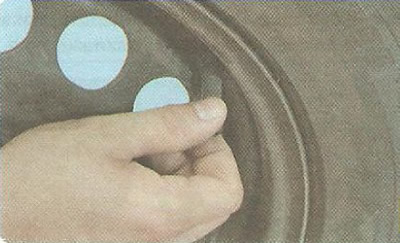
2. Unscrew the cap from the valve...
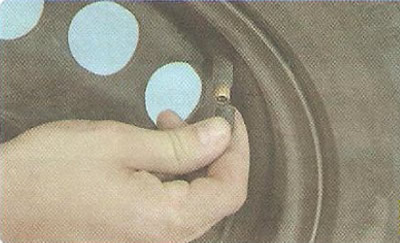
3.... and remove the cap.
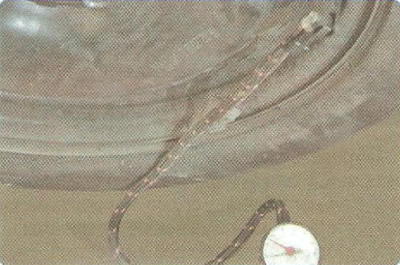
4. Check tire pressure. To do this, use a pump with a built-in pressure gauge. Connect the pump hose to the valve and check the pressure.
5. If the pressure is less than required, pump air, controlling the pressure on the pressure gauge.
6. If the pressure is more than required, press the special protrusion of the cap with the key on the tip of the spool and release the air from the tire. Measure the pressure with a manometer. By repeating these operations, bring the pressure to normal.
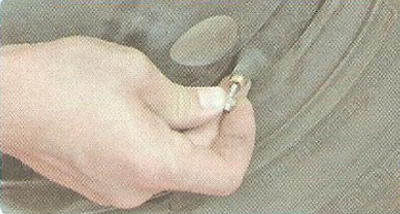
7. If you notice that the air pressure in your tires is constantly dropping; try tightening the spool with a cap, with a key.
Note: This is how the protective cap A looks with the key for tightening the spool B.
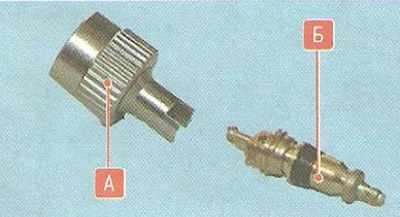
Warning: To avoid contamination of the valves, do not operate the vehicle without protective caps. If the caps have been lost, be sure to install new ones.
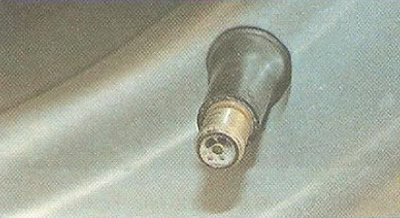
8. In order to check the tightness of the spool, wet the valve hole. If air bubbles appear.
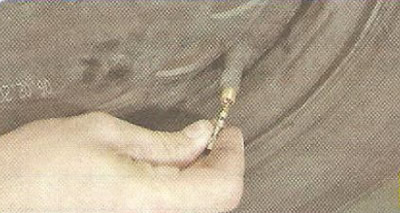
9. Replace the spool by unscrewing the defective one using a cap with a key.

10. Measure the remaining tread depth with a caliper. If the tread depth is 1.6 mm or less, replace the tire.

11. If there is no caliper at hand, then the tread depth can be checked visually by the tire wear indicators in the form of continuous transverse stripes on the tread.
Note: Indicator locations are marked on the tire sidewall with a triangle...

...or letters «TWI».

12. Check the tightness of the wheel nuts and, if necessary, tighten them to a torque of 90-120 Nm.
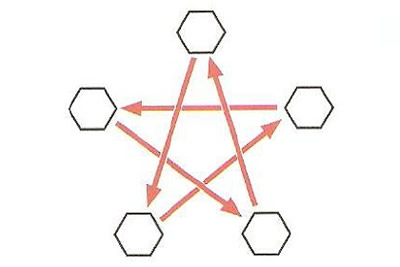
13. Tighten wheel nuts gradually crosswise.
